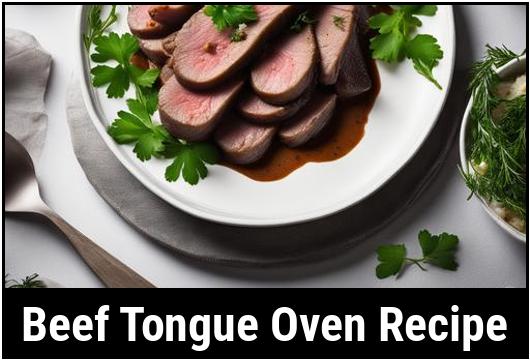
Beef Tongue Oven Recipe: A Delectable Delight With Incredible Flavor
Are you ready to embark on a culinary adventure that will tickle your taste buds and impress your guests? Look no further than a beef tongue oven recipe! This underrated cut of meat is incredibly versatile and offers a rich, flavorful experience like no other. In this comprehensive guide, we will explore every aspect of cooking beef tongue to perfection, from selecting the right cut to turning it into a mouthwatering masterpiece. So, put on your apron and let’s dive into the world of beef tongue!
Section 1: Understanding Beef Tongue
Before we delve into the culinary details and preparation, let’s take some time to appreciate the food science behind beef tongue. Beef tongue is a muscle located in the lower mouth of the cow. It contains a high amount of connective tissue, which gives it a unique texture and tenderness when cooked correctly. This cut is known for its rich flavor and melt-in-your-mouth texture, making it a gourmet delicacy.
Section 2: Choosing the Perfect Beef Tongue
When it comes to selecting beef tongue, freshness is key. Look for tongues that have a vibrant, pinkish color with minimal discoloration. Ensure the tongue has a thick, consistent layer of fat, as it contributes to the flavor and moistness during cooking.
Section 3: Cleaning and Preparing the Beef Tongue
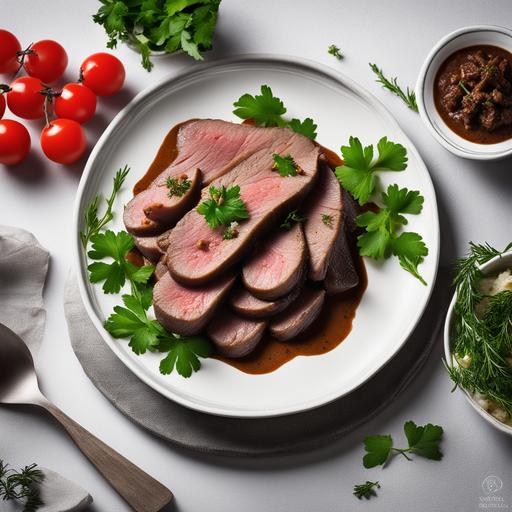
Cleaning and preparing beef tongue is essential to remove any impurities and achieve the best possible flavor and texture. Follow these steps for a stress-free cleaning process:
-
Start by rinsing the beef tongue under cold water to remove any surface debris.
-
Fill a large pot with water and bring it to a boil.
-
Place the tongue in the boiling water and let it simmer for about 10 minutes. This step helps remove any remaining impurities.
-
Remove the tongue from the pot and rinse it again under cold water. Pat it dry with a paper towel.
Cleaning the tongue thoroughly will ensure a clean and delicious final dish.
Section 4: Tips and Variations for Cooking Beef Tongue
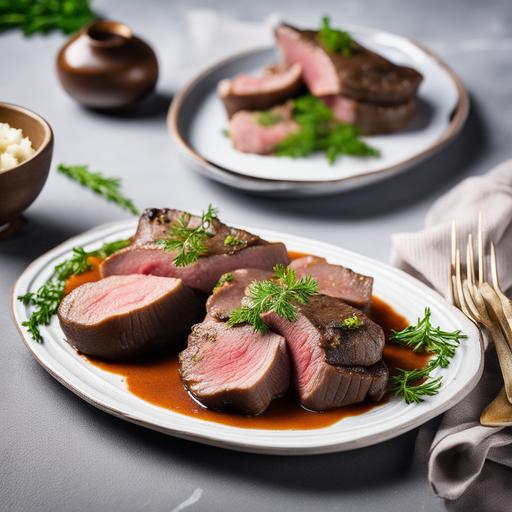
Now that we have a clean and prepared beef tongue, it’s time to move on to the cooking process. Here are some helpful tips and variations to elevate your beef tongue to the next level:
Tip 1: Marinating for Enhanced Flavor
Marinating the beef tongue overnight adds depth and flavor. Prepare a marinade using ingredients like soy sauce, red wine vinegar, garlic, and spices. Coat the tongue generously with the marinade, cover it, and let it rest in the refrigerator overnight. The longer it marinates, the more flavorful the end result will be.
Variation 1: Classic Braised Beef Tongue
A traditional method of cooking beef tongue is braising. This technique involves slow cooking the tongue in a flavorful liquid. Here’s how you can achieve a classic braised beef tongue:
-
Preheat your oven to 325°F (163°C).
-
In a large oven-proof pot, heat some oil over medium heat.
-
Sear the beef tongue on all sides until nicely browned.
-
Add diced onions, carrots, and celery to the pot for added flavor. Let them cook until softened.
-
Pour beef or vegetable broth over the tongue until it’s almost covered.
-
Cover the pot and transfer it to the preheated oven.
-
Allow it to braise for about 3-4 hours until the tongue is tender. Baste the tongue occasionally with the cooking liquid.
-
Once done, remove the pot from the oven and let the tongue cool slightly before peeling off the outer skin.
-
Slice the tongue into thin pieces and serve it with the braising liquid and your choice of sides.
The slow cooking process of braising results in a wonderfully tender and succulent beef tongue.
Variation 2: Grilled Beef Tongue with a Twist
If you’re looking for a unique twist on your beef tongue recipe, consider grilling it! Grilling adds a smoky charred flavor that pairs exceptionally well with the tongue. Follow these steps for a mouthwatering grilled beef tongue:
-
Preheat your grill to medium-high heat.
-
Season the beef tongue with salt, pepper, and your choice of spices.
-
Place the tongue directly on the grill grates and cook for around 2-3 minutes per side, until nicely charred.
-
Move the tongue to indirect heat and continue grilling for an additional 15-20 minutes until it reaches an internal temperature of 145°F (63°C) for medium doneness.
-
Once cooked to your desired doneness, remove the tongue from the grill and let it rest for a few minutes.
-
Slice the tongue against the grain into thin, succulent pieces.
-
Serve the grilled beef tongue with a zesty chimichurri sauce or your favorite dipping sauce.
Grilling beef tongue infuses it with a unique smoky flavor, taking it to a whole new level of deliciousness.
Section 5: Doneness Checks and Avoiding Under/Overcooking
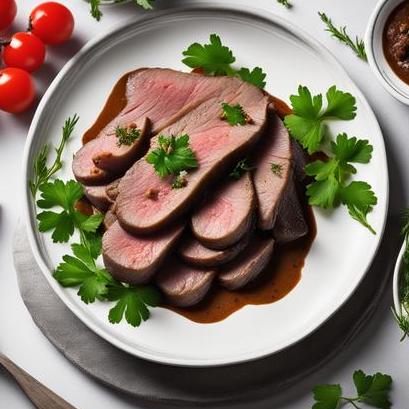
Determining the doneness of beef tongue can be a bit tricky since it requires long, slow cooking to achieve its tender texture. Here are some doneness checks to ensure your beef tongue is cooked to perfection:
-
Visual Check: Beef tongue is usually cooked until the skin peels away easily. So, when you notice the skin loosening or cracks appearing, it’s a good indication that it’s close to being done.
-
Temperature Check: Use a meat thermometer to check the internal temperature. For a tender, moist tongue, aim for an internal temperature of 190°F (88°C). This temperature ensures the connective tissues have broken down sufficiently for a melt-in-your-mouth experience.
To avoid undercooking or overcooking, it’s crucial to monitor the cooking process and make adjustments to ensure your beef tongue is cooked to perfection.
Section 6: Serving and Accompaniments
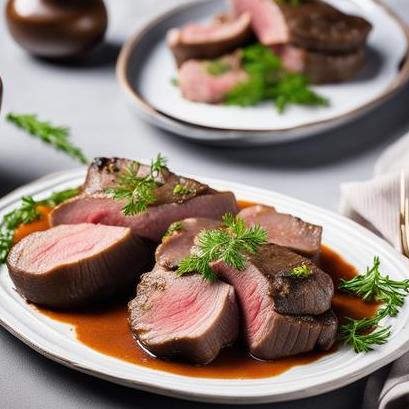
Now that your beef tongue is cooked to perfection, it’s time to enjoy the fruits of your labor! Here are some delectable serving suggestions and accompaniments to enhance your beef tongue dining experience:
-
Traditional Remoulade: Whip up a classic remoulade sauce with mayonnaise, mustard, and pickles. Its tangy flavor perfectly complements the richness of beef tongue.
-
Pickled Vegetables: Serve your beef tongue with an assortment of pickled vegetables like carrots, radishes, or cucumbers. The crispness of the pickles adds an appealing contrast to the tender tongue.
-
Warm Baguettes: Pair your beef tongue with freshly baked, warm baguettes for a delightful sandwich experience. Add some tangy mustard or horseradish for an extra kick of flavor.
-
Roasted Potatoes: Roasting potatoes with garlic and rosemary makes for a fantastic side dish. The savory flavors of the roasted potatoes perfectly complement the succulent beef tongue.
-
Tangy Slaw: Prepare a tangy slaw with thinly sliced cabbage, carrots, and a zesty vinaigrette. The refreshing crunch of the slaw pairs beautifully with the rich, tender beef tongue.
With these scrumptious accompaniments, your beef tongue dish will be a feast for both the eyes and palate.
Section 7: Final Thoughts and Tips
Cooking beef tongue can be an intimidating endeavor, but with the right techniques and a sense of adventure, you’ll be rewarded with a truly memorable and delectable dish. Here are some final tips to ensure your beef tongue oven recipe triumphs every time:
-
Experiment with Flavors: Explore various marinades, rubs, and seasonings to customize the taste profile of your beef tongue. The possibilities are endless!
-
Be Patient: Cooking beef tongue requires time and patience. The slow cooking methods ensure tenderness, so resist the temptation to rush the process.
-
Leftovers Transformed: If you happen to have leftovers, thinly slice the cooled beef tongue and enjoy it in sandwiches, tacos, or even stir-fries. The leftover tongue is incredibly versatile and can elevate any dish.
Now that you’ve unlocked the secrets to cooking a tantalizing beef tongue, it’s time to gather your ingredients, embrace your inner chef, and embark on this culinary journey. Prepare to impress yourself and your guests with a dish that showcases the incredible flavors and textures of this often overlooked cut of meat. Get cooking and bon appétit!
Sources
FAQS On Beef Tongue Oven Recipe
How Do I Prepare Beef Tongue For The Oven?
Start by trimming off any excess fat and rinsing the tongue under cold water. Then, immerse it in boiling water for a few minutes before removing the top layer of skin. Season it with salt and any desired herbs or spices before placing it in a roasting pan.
How Long Does Beef Tongue Need To Cook In The Oven?
The cooking time for beef tongue depends on its size. A medium-sized tongue (around 2.5 pounds) will need to cook in a preheated 375°F oven for approximately 2-3 hours. Use a meat thermometer to check for an internal temperature of at least 160°F.
Can I Marinate Beef Tongue Before Cooking In The Oven?
Yes, marinating is a great way to add flavor to beef tongue. You can marinate it for at least 4-6 hours or even overnight in the fridge. Some popular marinade ingredients for beef tongue include soy sauce, garlic, and honey.
Is It Necessary To Cover Beef Tongue While Roasting In The Oven?
It is recommended to cover the beef tongue with aluminum foil while roasting in the oven. This helps to trap moisture and prevent the tongue from drying out. You can remove the foil for the last 20-30 minutes of cooking to allow the tongue to brown.
How Do I Know When The Beef Tongue Is Ready To Serve?
Use a meat thermometer to check for an internal temperature of at least 160°F. The tongue should feel tender when pierced with a fork or skewer. Let it rest for about 10 minutes before slicing and serving. The tongue is ready to serve when it is easy to slice and falls apart easily.


